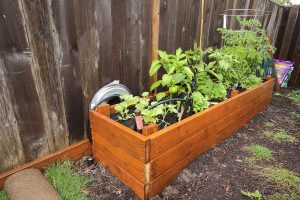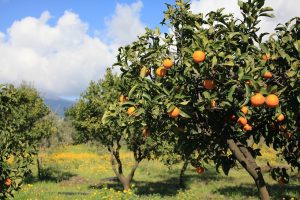Last Updated on August 6, 2023 by teamobn

No other plants have held such sway over the human imagination as those in the genus Ficus. Fig trees feature in every major religion, inspiring kings and queens, scientists, poets, and soldiers through the millennia.
In many ways, our ancestral reverence for the fig tree has not only influenced human culture but also enriched it. Figs are among the most ancient fruits on our table, figuring in the Christian bible, the Koran, and the Jewish Torah.
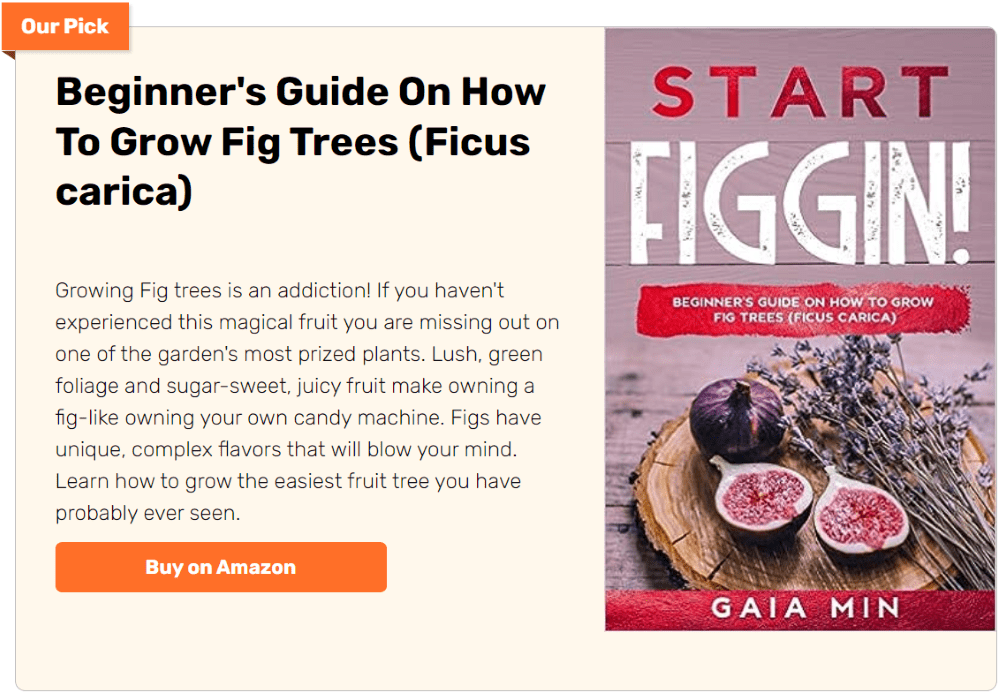
The brothers Romulus and Remus, the mythic founders of ancient Rome, were supposedly suckled by a she-wolf under a fig tree. In India, the Kuttia Kondh people say their goddess Nirantali molded the first people’s tongues from the leaves of a fig tree.
The Common Fig
Contents
Our ancient kinship with the fig tree has extended into modern times. From the meadows of the Middle East to the rugged steppes of the Mediterranean, farmers still grow and harvest figs as they did thousands of years ago.
Some 850 species of woody trees, shrubs, vines, epiphytes, and hemiepiphytes comprise the genus Ficus. The class encompasses both the spectacularly massive Moreton Bay Fig and the diminutive Mini Lucie.
The tree we call the common fig, Ficus carica, is an Asian species of flowering plant belonging to this myriad genus. The plant is the source of the fruit people have sought and cultivated since ancient times.
But for all its cultural potency, the common fig – or simply fig – is surprisingly easy to plant and grow. That’s why more and more gardeners are growing figs in their backyards these days.
Below are a few tips on planting, growing, and harvesting figs in your backyard.

Growing Figs in Containers
If you live in a region that sees cold winters, it would be best to plant figs in outdoor containers in early spring or late fall. You can purchase plants from a reputable nursery or propagate from spring divisions or summer cuttings from mature trees.
You’ll need a large container, preferably plastic to minimize weight. Fill the container with soil-based potting mix and add fine bark chips to improve drainage. Work some compost into the soil for best results.
Dig a hole a few inches deeper and wider than the spread of the roots. Set the tree on in the middle of the hole and fill back in with potting mix.
Water the young fig when the soil dries to an inch below the surface. If you let the soil dry out completely, the tree might lose its leaves.
Move the container to an area that receives full sun in the summer. Be sure to add a high-nitrogen fertilizer every 4 weeks in spring and summer, advises the Old Farmer’s Almanac.
Water the tree moderately. In the winter, move the dormant tree indoors and keep the soil moist.
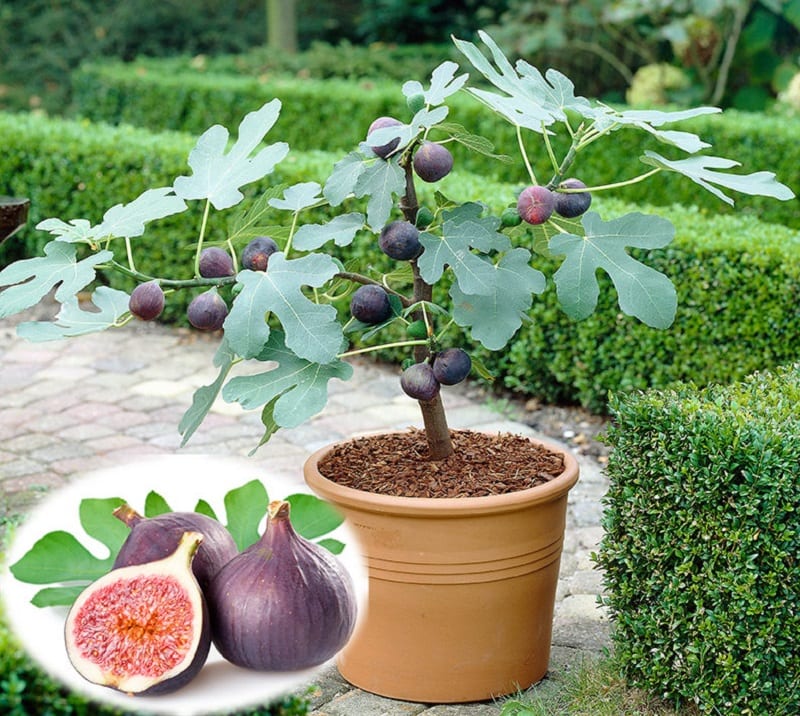
Growing Figs in the Garden
In your garden, you can plant fig trees as you would any young tree. Figs need a sunny spot that’s protected from winter winds. Plant the tree in spring or early fall. Fig trees can grow in most types of garden soil as long as the area is well-drained and rich in organic material.
Be sure to space fig trees at least 20 feet away from any buildings or other trees as they put down deep roots. The common fig usually grows 3 meters tall and 5 meters wide – sometimes much larger. Bear that in mind when choosing a planting spot.
Once you’ve chosen a spot, dig a hole deeper and wider than the spread of the roots. Set the tree on top of a small mound of soil in the middle of the hole.
Mulch the soil well with compost. You should apply a foliar spray of seaweed extract on young trees at least once a month during the growing season.
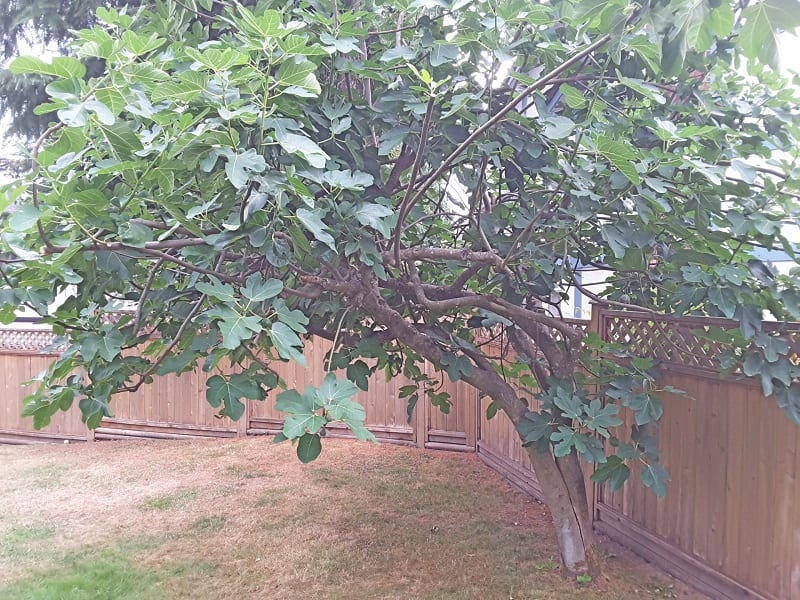
Caring for Figs
Water young fig trees regularly to help them become established. In areas with dry climates, water fig trees deeply at least once a week. Unless grown in containers, most fig trees do not require regular fertilization.
However, if your fig tree is not growing much you can add ½ to 1 pound of nitrogen supplement to the soil. Divide the nitrogen supplement into 3 or 4 feedings and start applying in late winter. Continue the applications until midsummer.

Pruning and Winter Care
Figs are not usually prone to pest or disease problems in North America; and they are well-suited to most of Australia. Keep young plants well-watered to avoid leaf drop, especially when they’re growing in containers.
You should prune young trees to encourage the growth of several main branches. Remember to remove any dead or diseased branches during the dormant season. Aim for an umbrella-like shape so you can enjoy the tree’s shade.
Once the tree is established, there will be no need to prune except to maintain its overall shape and size.
In the winter, you can protect your outdoor fig tree with a cylindrical cage of hardware cloth. Fill the enclosure with straw for insulation. Do not attempt to cover the tree with plastic, which can overheat.
You can keep birds and squirrels away with netting. You should also spread wood ash around the base of tree to keep ants from foraging for fruit. Keep young plants well-watered to avoid leaf drop, especially when they’re growing in containers.
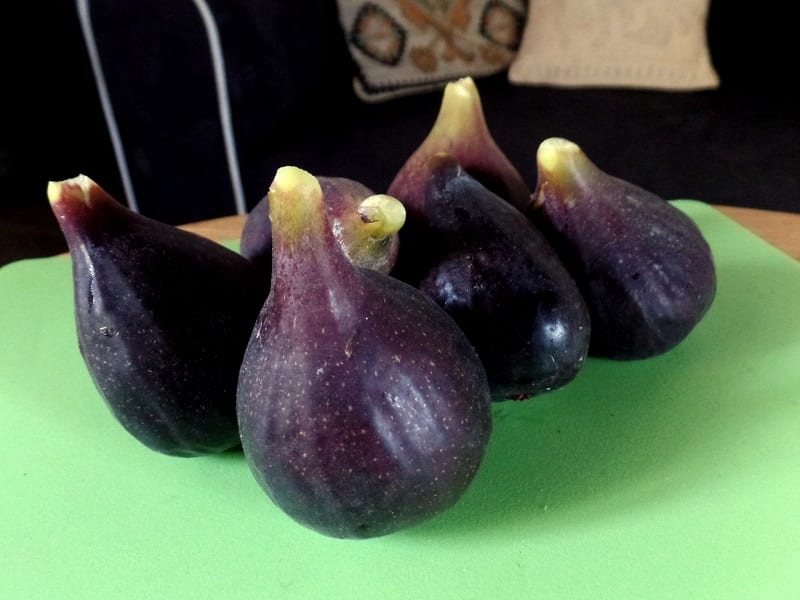
Harvesting Figs
Harvest figs only when they are fully ripe as they will not continue to ripen off the tree. The ripe fruit is soft to the touch and will attain the deep, dark purple or purple-green color familiar to those who enjoy eating it fresh.
Be sure to wear gloves and long sleeves when you harvest. The sap from the fig tree can irritate your skin.
Figs are very perishable, but you can store them in the refrigerator where they will keep for 2 to 3 days. For long-term storage, you can freeze figs whole for later use.
The luscious, juicy fig makes for wonderful eating. The soft fruit is full of seeds, but these are so small they serve only to add to its unique texture.
Most varieties are intensely sweet, and this is why chefs use them in desserts. Some also use the honey-sweetness of the fruit to cut into the sharp, savory flavors of meat and cheese.
Whether in a container or in in the ground, a fig tree would make a lovely addition to any garden. Are you ready to plant your own fig tree?

